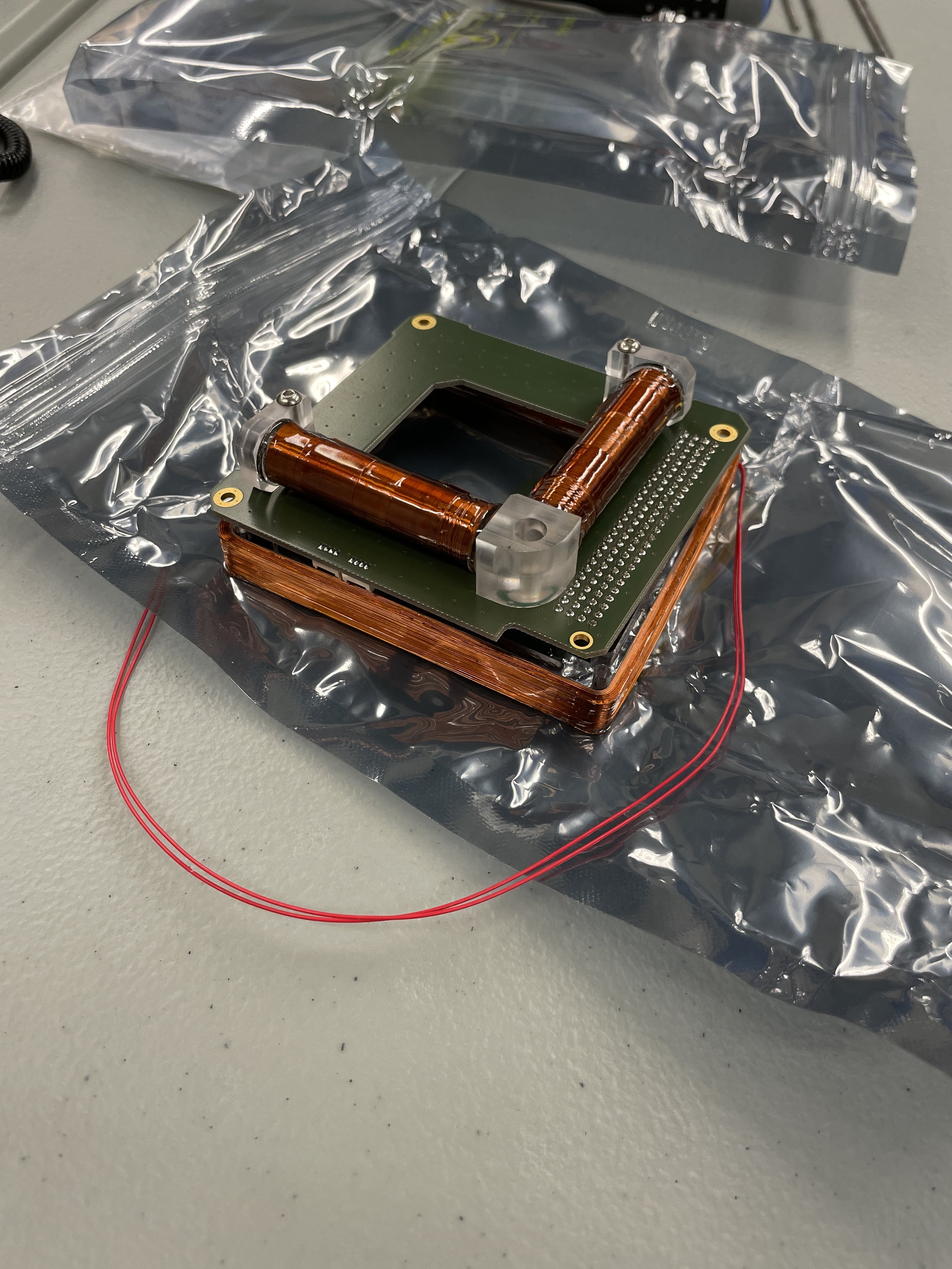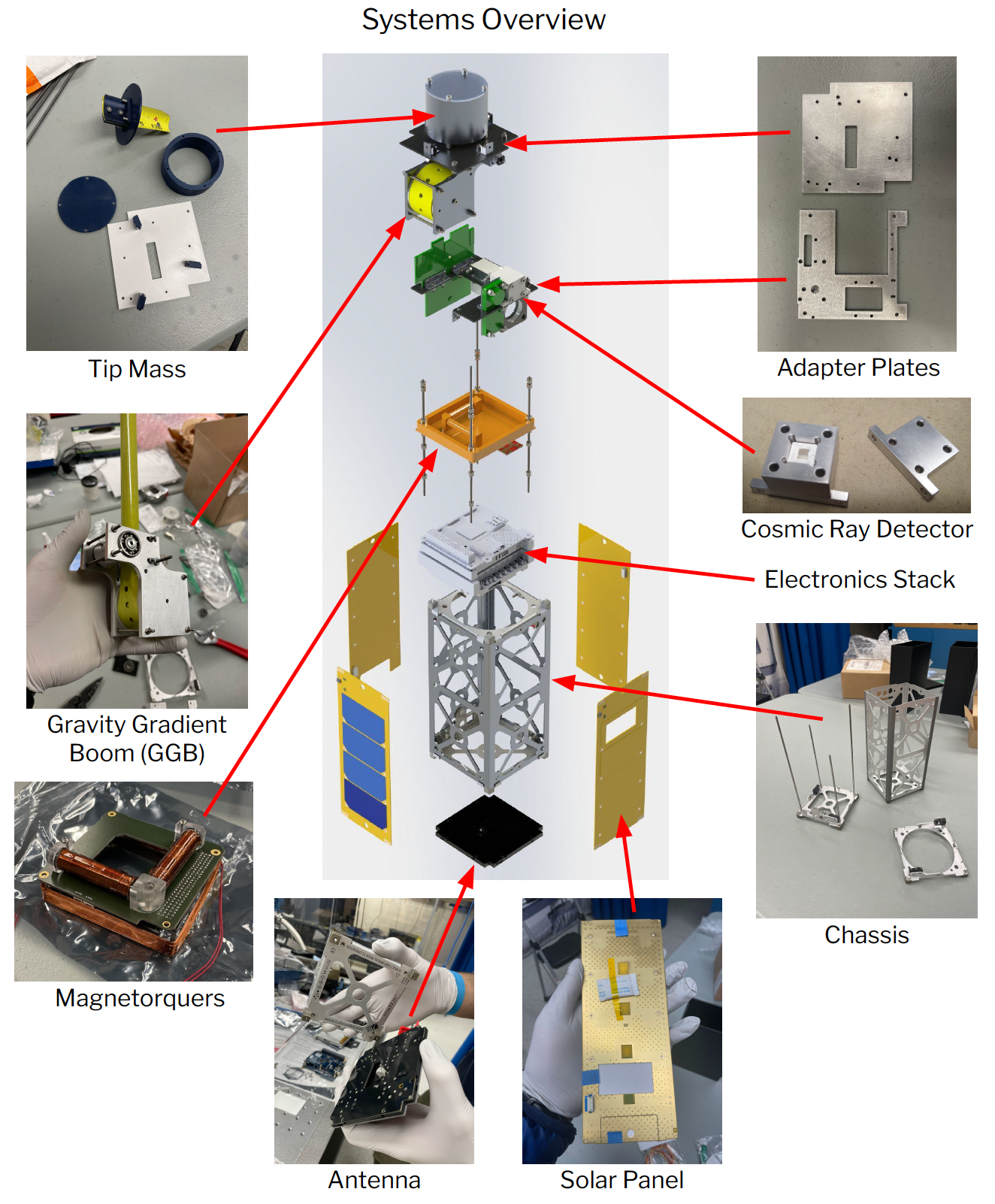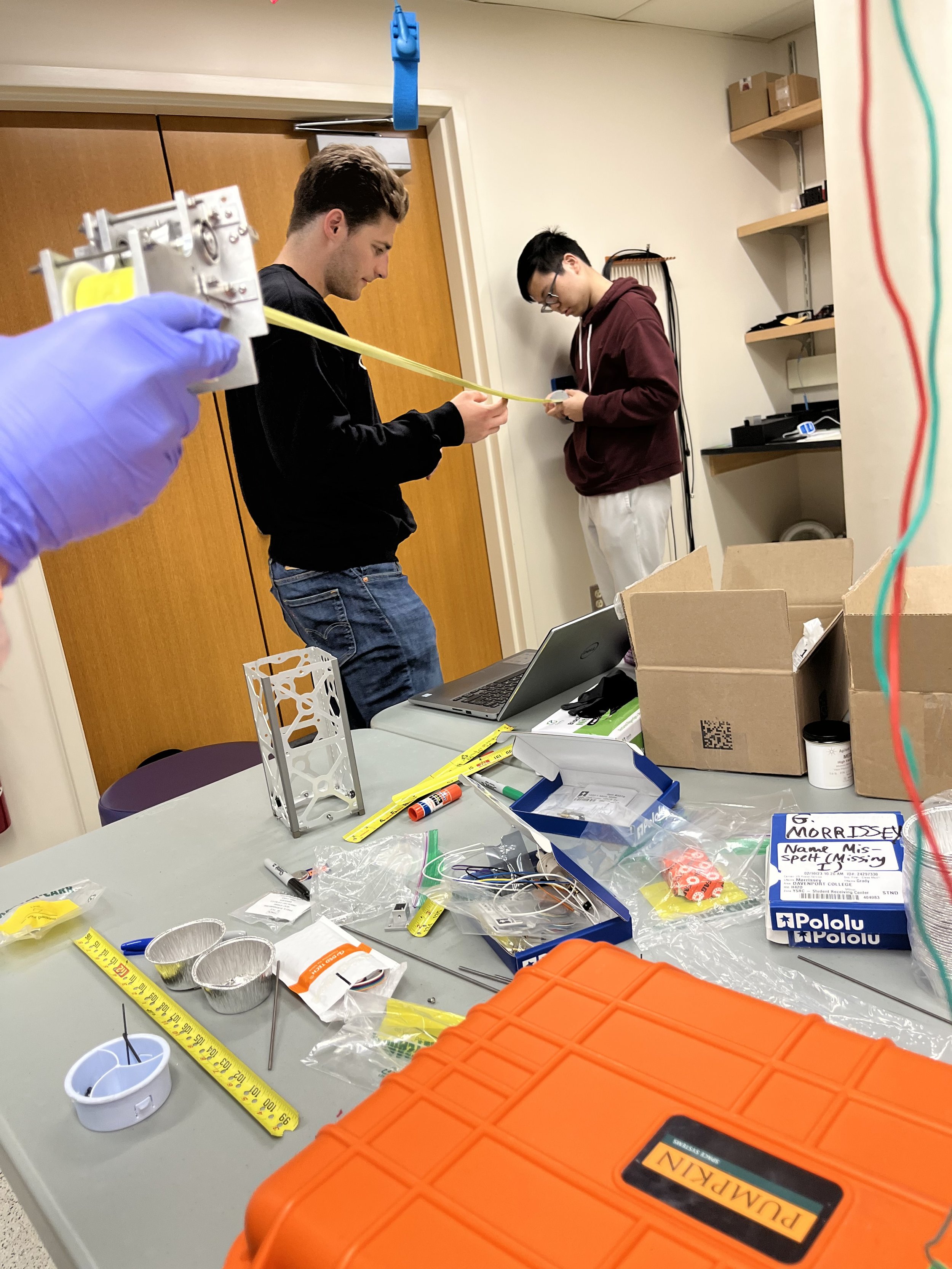CubeSat
Leadership: Sean Lewis
The CubeSat team is designing and building a CubeSat that will carry a cosmic ray detector to measure high-energy protons and electrons originating from the sun and outside the galaxy. The team will collect information on the density and energy of these particles, and relate it to the satellite’s position in orbit. The satellite will also demonstrate a gravity gradient technology for passive stabilization.
-
What is a CubeSat?
CubeSats are miniature satellites which provide a standardized, inexpensive design that can easily fit alongside larger cargo on space-bound craft. They are built from a modular structure of 10x10x10cm cubes (hence the name). Many vendors provide a variety of commercially available components designed to fit the structure.
-
What Are They Used For?
The CubeSat model has given student groups, hobbyists, and researchers operating with limited funding or experience unprecedented access to space. Since the program’s adoption, hundreds of universities, companies, and research organization have followed the design standard and successfully launched their own CubeSats for space exploration, scientific research, and technological development.
-
When Will This Launch?
In 2019, previous project leader Keshav Raghavan secured a launch slot and contract with NASA’s CubeSat Launch Initiative. This year’s project team is working tirelessly to meet NASA requirements and build a successful satellite. The satellite will be in an orbit of 450 km after being launched from the International Space Station.
Project Details
-
Students at YUAA are building Yale's first CubeSat in partnership with the NASA CubeSat Launch Initiative. After its inception in 2015 and a rocky initialization that featured multiple complete overhauls as well as the COVID-19 pandemic, the project entered development in 2021 and is now nearing integration with a launch No Earlier Than spring 2025.
The Bouchet Low-earth Alpha/Beta Space Telescope (BLAST) is named in honor of Edward Bouchet, the first African American to earn a PhD at Yale. BLAST will hitch a ride to the International Space Station in low-earth orbit and deploy from the NanoRacks CubeSat Deployer. Following an autonomous active detumbling phase (2-4 days), ground control will signal extension of a gravity gradient boom for passive stabilization (2-8 weeks), after which a scintillator-based cosmic ray detector will begin recording energy-resolved cosmic ray events that will be downlinked and published to enable astrophysical investigation for students and scientists around the world. BLAST is planned to remain in orbit for 1 year.
-
In-house scintillator cosmic ray detector providing event counts with peak height resolution aggregated every 5 minutes
In-house motor-driven gravity gradient boom with a length of 3 m and a tip mass of 1.6 kg
Autonomous active detumbling to 0.1 deg/sec/axis using a custom implementation of the B-dot algorithm
Autonomous attitude determination using magnetic field and sun vector measurements
Custom telemetry and telecommand system with autonomous downlink triggering over arbitrary ground coordinates
Half-duplex UHF radio link using 2GFSK modulation with up to 9600 bps downlink and 19200 bps uplink
Fully autonomous SDR-based ground station with alt/az tracking developed on the gnuradio and hamlib platforms
In-house flight software including real-time multitasking with FreeRTOS, running on an STM32H7 microcontroller
-
2023-2024:
The ground station was largely implemented through student summer research. Flight software development continued with validated drivers and middleware and application components entering testing. A workaround for a major manufacturing flaw discovered in the sun sensor was developed and tested. Due to safety concerns, a new motor was selected for the gravity gradient boom. Orbit simulations validated the power and link budgets, and lab testing informed revisions of the cosmic ray detector amplifier chain.
2022-2023:
Summer research enabled simulation testing of the attitude control solution. Flight software development continued with an expanded set of target attitude and radio control capabilities. The cosmic ray detector team designed the signal processing chain and began selecting components and drafting a custom PCB. The gravity gradient boom prototype was assembled and extensively tested. An end-to-end radio link model was developed, but testing of the amateur UHF transceiver previously selected for the ground station showed it inadequate for the mission. An alternative SDR-based solution was concepted and components acquired.
2021-2022:
Student research paved the way to a mature attitude determination and control system and flight software planning and drafting continued with a new post-pandemic team. Cosmic ray detector design also resumed with a new team and finalized the instrument architecture.
2020-2021:
The COVID-19 pandemic disrupted development as the team was unable to meet in-person and students navigated a very different college life. Despite this, drafting and conceptualization work began with the new on-board computer, and the team partnered with the Yale chapter of the IEEE for shared use of the Yale Space Station radio.
2019-2020:
The system design of the sat was finalized and the component search concluded with the procurement of commercial off-the-shelf on-board computer, transceiver, and electrical power system from EnduroSat.
2018-2019:
A flight software team was formed that continued prototyping work and explored flight software solution architectures, especially in relation to multitasking operating systems. The mechanical team identified the necessity of a gravity gradient boom and proceeded with first designs.
2017-2018:
The YUAA receives the NASA CSLI in February 2018, largely thanks to a push in new team leadership. NASA support helps the team find components and funding sources with greater ease.
The team begins ordering components like the magnetometer and magnetorquer. A development on-board computer is purchased but is deemed inadequate after prototyping.
Initial work on the cosmic ray detector starts and the team iterates through numerous designs to search for an architecture that enables research-grade data collection and is compatible with the financial, mass, and power budgets.
2016-2017:
During an intense concept phase, multiple mission objectives and hardware platforms are evaluated and design specifications are revised many times. The BLAST team finally selects cosmic ray detection as the mission objective and begins searching for components.








